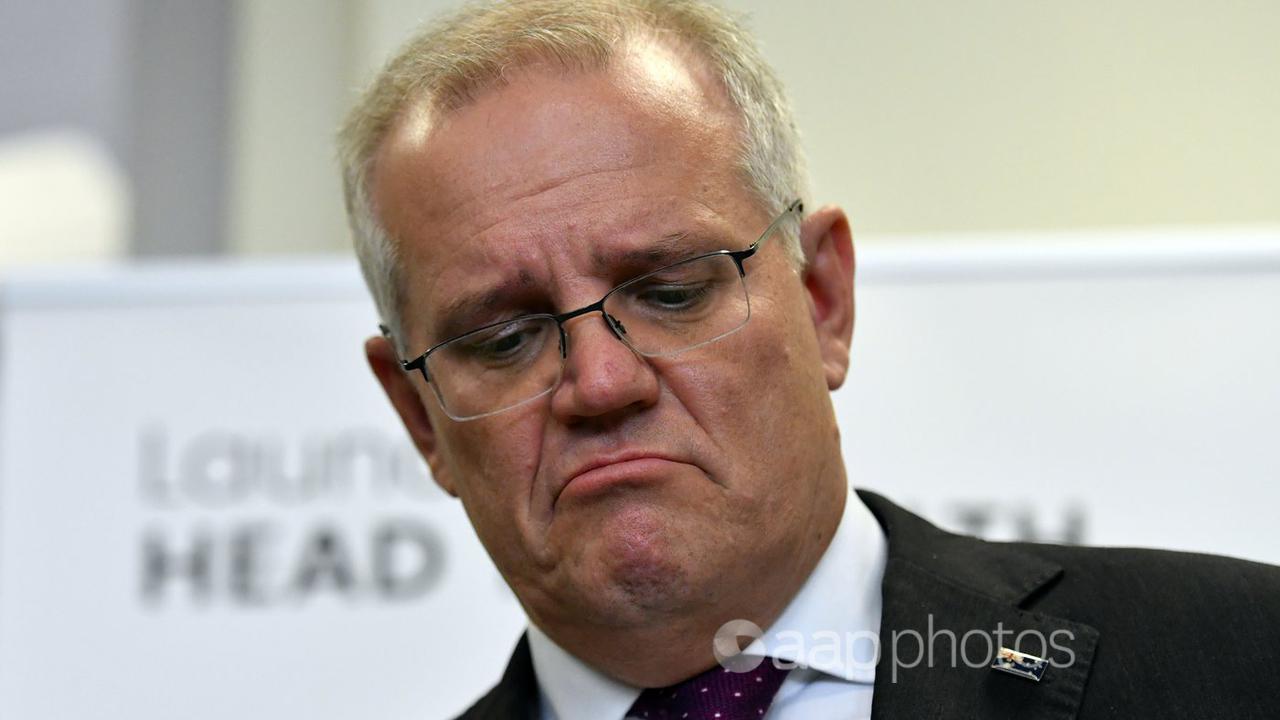Labor party and union figures have attempted to contrast the prime minister’s pay packet with stagnant wage growth for low-income earners, claiming Scott Morrison’s salary has swelled from $140,000 to $550,000 over a decade.
The figures are broadly accurate. Between July 2011 and March 2012, Mr Morrison earned $140,910, although by May 2012 – a decade ago to the month of the claim – this had increased to $231,250 following a large pay rise for federal politicians and the introduction of extra pay for shadow ministers.
The claim followed the publication of a news.com.au article on May 12 that said: “Mr Morrison’s annual salary has jumped from $140,000, when he was a backbencher, to $550,000, as prime minister, in the last decade alone”.
Australian Council of Trade Unions leader Sally McManus tweeted a link to the story along with a comment reading: “The Prime Minister’s pay has gone from $140,000 to $550,000 over the last decade. A huge increase. Yet he wants people on $40,000 to go backwards.”
Queensland Labor and at least two of the party’s candidates (see posts here and here) made similar claims on social media.
Federal politicians’ salaries consist of two components. All MPs and senators are paid a base salary, which at the time of writing is valued at $211,250 (page 2).
Additionally, MPs and senators who hold specified positions – including ministers, shadow ministers and committee chairs – are paid a supplementary ‘officer’s salary‘, which is calculated as a proportion of the base salary and rises with the seniority of the role.
Prime ministers are paid an officer’s salary valued at 160 per cent of the base salary, while cabinet ministers are paid a 72.5 per cent premium. On the opposition benches, the leader is paid an additional 85 per cent while shadow ministers receive an extra 25 per cent of the base salary (pages 9-10).
However, shadow ministers were not entitled to the additional officer’s salary until March 2012.
AAP FactCheck calculated changes in the value of Mr Morrison’s salary during his time in parliament using historical base salary figures (table 2), a list of Mr Morrison’s official roles and the loading he received on top of the base salary for his various positions.
Mr Morrison began his parliamentary career in 2007 as a backbencher earning a base salary of $127,060. Multiple increases in the basic parliamentary pay took his salary to $140,910 by July 2011.
In December 2011, the Remuneration Tribunal determined all MPs and senators would receive a 31 per cent hike in the base salary from March 2012 in exchange for cuts to other entitlements such as the Life Gold Pass travel scheme.
The tribunal also introduced the pay loading for shadow ministers worth 25 per cent of the base salary. Mr Morrison was then serving as shadow immigration minister, meaning the combined changes lifted his salary 64 per cent to $231,250.
After the coalition won government in September 2013, Mr Morrison became minister for immigration and border protection. This boosted Mr Morrison's total salary to $336,599, including the 72.5 per cent loading for cabinet ministers.
Mr Morrison's salary increased further after he was appointed as treasurer in September 2015 and then prime minister in August 2018.
At the time of writing, Mr Morrison earns $549,250 as prime minister, which consists of his $211,250 base parliamentary salary plus the 160 per cent loading.
Graeme Orr, a professor in the law of politics from The University of Queensland, told AAP FactCheck in an email that politicians' salaries are set by the Remuneration Tribunal, an independent statutory body established by the Whitlam government in 1973.
"The Remuneration Tribunal has a narrow job - setting salaries for elite public officers, with no concern for livability or effects on business and the broader economy," he said, adding that politicians would only be able to increase their own pay if they passed new laws that overturned the tribunal's salary-setting powers.
In addition to their parliamentary salaries, federal politicians also receive an annual 'electorate allowance' of at least $32,000 per year. This is paid monthly with politicians' salaries. Federal politicians are also entitled to claim specified allowances for travel, communication and office expenses.
The Verdict
The claim that Mr Morrison's salary has risen from $140,000 to $550,000 in the past decade is broadly correct.
In early 2012, Mr Morrison earned $140,910 - although this rose to $231,250 in May of that year, a decade to the month of the claim being made. He now earns $549,250 as prime minister.
Mostly True – The claim is largely accurate but includes minor errors or problems.
* AAP FactCheck is an accredited member of the International Fact-Checking Network. To keep up with our latest fact checks, follow us on Facebook, Twitter and Instagram.
All information, text and images included on the AAP Websites is for personal use only and may not be re-written, copied, re-sold or re-distributed, framed, linked, shared onto social media or otherwise used whether for compensation of any kind or not, unless you have the prior written permission of AAP. For more information, please refer to our standard terms and conditions.


















